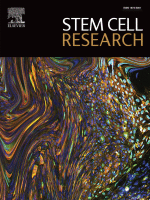CRISPR/Cas9-mediated generation of two isogenic CEP290-mutated iPSC lines
CEP290 is an important human disease gene, as mutations are implicated in a broad spectrum of autosomal recessive ciliopathies, including Leber congenital amaurosis and Joubert, Meckel, Senior-LØken or Bardet Biedl syndromes.

Abstract
CEP290 is an important human disease gene, as mutations are implicated in a broad spectrum of autosomal recessive ciliopathies, including Leber congenital amaurosis and Joubert, Meckel, Senior-LØken or Bardet Biedl syndromes. To create isogenic mutant human induced pluripotent stem cell (hiPSC) lines for disease modeling, we employed CRISPR/Cas9 to introduce disease-relevant mutations into the control hiPSC line HMGU1 (ISFi001-A). Thorough characterization of the lines, including the effect of the mutation at the mRNA and protein level, shows that these CEP290-mutant lines provide a useful resource for studying ciliopathy disease mechanisms and cilia biology through differentiation into diverse cell types and organoids.
Keywords:
Human iPSC (induced pluripotent stem cells), neurons, immunofluorescence staining, Ciliopathies, hiPSC lines, CRISPR, Cas9
Read here the full publication:
CRISPR/Cas9-mediated generation of two isogenic CEP290-mutated iPSC lines.
PMID: 40701116, DOI: 10.1016/j.scr.2025.103781, S2CID: 277509530. Stem Cell Research, 87:103781. 2025, September 1. Epub ahead of print.
Authors:
Joana Figueiro-Silva, Melanie Eschment, Michelle Mennel, Affef Abidi, Beatrice Oneda, Anita Rauch, Ruxandra Bachmann-Gagescu